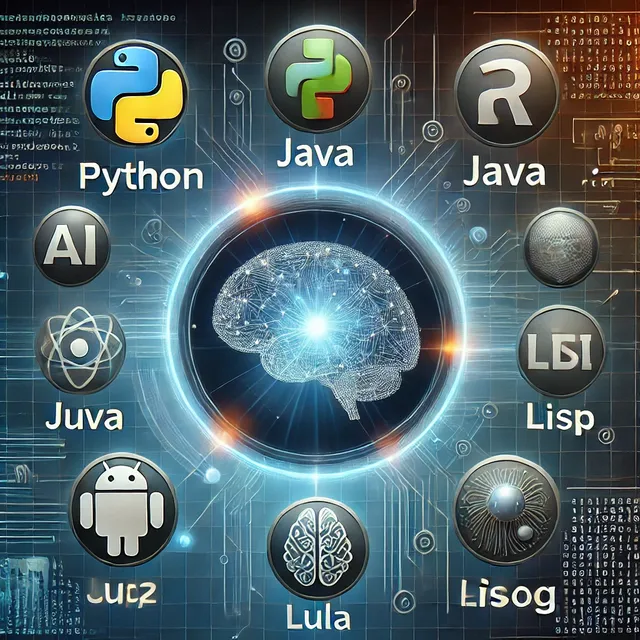
🤖 is transforming sectors such as 🏥 and 💰. To create efficient solutions, choosing the right 💻 is essential. Some stand out for their versatility, support for specialized 📚, and community adoption. Below, we explore the main languages used in 🤖 and their applications.
1. 🐍 Python
🐍 is the most popular due to its simple syntax and vast collection of 📚. Among the most used:
- TensorFlow and PyTorch: For 🧠 deep learning.
- Scikit-learn: For 📊 machine learning.
- NLTK and spaCy: For 📝 natural language processing.
- OpenCV: For 👀 computer vision.
🎯 Applications: Ideal for beginners and widely used in 🔬 research and 🤖 development.
2. 📊 R
📊 is used for statistics and 📈 data analysis, being popular among 🧑🔬 data scientists. Main 📚:
- Caret and mlr: For 🏆 machine learning.
- ggplot2: For 🎨 data visualization.
- tm and quanteda: For 📝 natural language processing.
🎯 Applications: Suitable for advanced 📊 statistics and projects requiring extensive 📄 data manipulation.
3. ☕ Java
☕ is widely used in the 🌍 corporate world, especially for scalable applications. Some key 📚:
- Weka: For 🏆 machine learning.
- DeepLearning4j: For 🧠 deep learning.
🎯 Applications: Used in enterprise solutions, 💰 financial systems, and robust applications.
4. 🚀 Julia
🚀 is optimized for high-performance numerical computing. Key 📚:
- Flux.jl: For 🧠 deep learning.
- MLJ.jl: For 🏆 machine learning.
🎯 Applications: Ideal for 🔬 research and projects requiring high computational performance.
5. ⚡ C++
⚡ is a high-performance language used to optimize critical AI components. Some key 📚:
- TensorFlow (C++ support)
- Dlib: For 🏆 machine learning and 👀 computer vision.
🎯 Applications: Used in ⚙️ embedded systems, 🕹️ game development, and real-time applications.
6. 📜 Lisp
📜 is a pioneer in 🤖 AI, recognized for its flexibility in symbolic processing and customized 📊 algorithm creation.
🎯 Applications: Used in 🔬 research and the development of specialized AI systems.
7. 🧩 Prolog
🧩 is designed for 🧠 logical programming and is widely used in 🤖 symbolic AI. Its main applications include:
- 🏆 Expert systems.
- 📝 Natural language processing.
- 🔍 Automated reasoning.
🎯 Applications: Relevant for 🤖 AI applications that require knowledge modeling and logical inference.
🎯 Conclusion
The choice of 💻 programming language for 🤖 AI depends on the project goals, performance needs, and available 📚 tools. 🐍 remains the dominant language, but 📊, ☕, 🚀, ⚡, 📜, and 🧩 play essential roles in different contexts. Mastering one or more of these 💻 languages can be a major advantage in the 🤖 AI field! 🚀
Upvoted! Thank you for supporting witness @jswit.
Downvoting a post can decrease pending rewards and make it less visible. Common reasons:
Submit